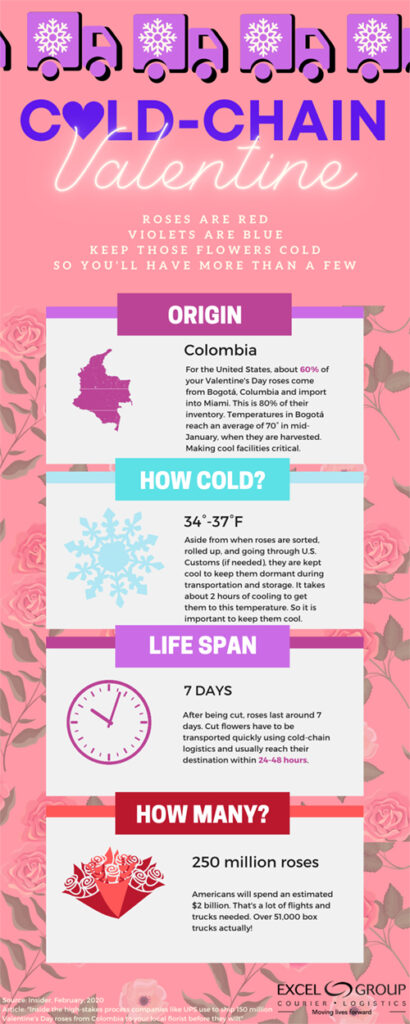Oh, Valentine’s Day. For those who celebrate, it’s a day with endless traditions to showcase your affection. Some want to go out, others stay in. One wants chocolate, gifts, and balloons, the other just wants to watch a movie and go to bed early. Some order flowers in advance while others, *cough*, make the frantic pilgrimage to the local grocery store – and thanks to flower cold chain logistics – many will receive roses and other fresh flowers for Valentine’s Day!
Flower Cold Chain Logistics
A special place in the heart of Valentine’s Day is reserved for roses. Have you ever wondered how so many roses are available on one day in the middle of Winter? They seem so simple when displayed beautifully in a vase. Most would never have imagined the complicated journey they would make before putting smiles on so many faces. Those flowers for your honey traverse a complex regimented process called flower cold chain logistics.
In general, cold chain logistics is a temperature-controlled supply chain process that monitors and preserves temperature-sensitive material during production, storage, transportation, and distribution. This meticulous system ensures freshness and quality by maintaining optimal temperatures throughout the journey.
Roses, like most flowers, are very temperature-sensitive and considered a highly perishable cargo. Once cut, they require constant temperature control to keep them looking fresh for Valentine’s Day and many other special occasions, guaranteeing they arrive at their destination vibrant and healthy.
Flower Cold Chain Logistics involves:
- Refrigerated warehouses while they’re stored
- Fans for forced air-cooling during sorting or rolling
- Proper packaging with insulation for the flight (some airports have vacuum coolers)
- Climate-controlled vehicles for regional and local distribution
- Cold rooms for display
Let’s remove those rose-colored glasses and check out some temperature-sensitive facts about your favorite Valentine's accessories.





-2.png)

%20What%20Does%20a%20Courier%20Do.png)